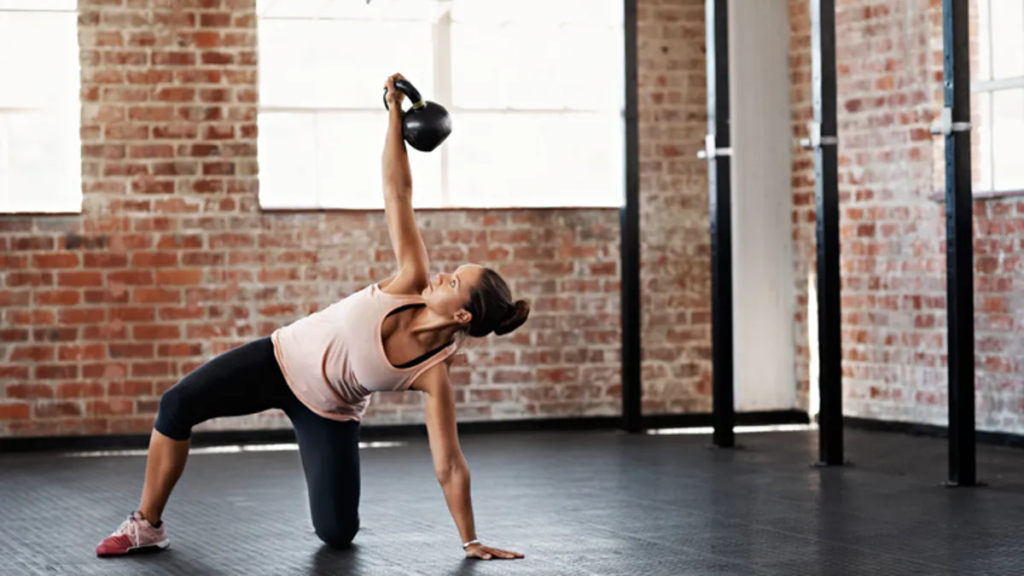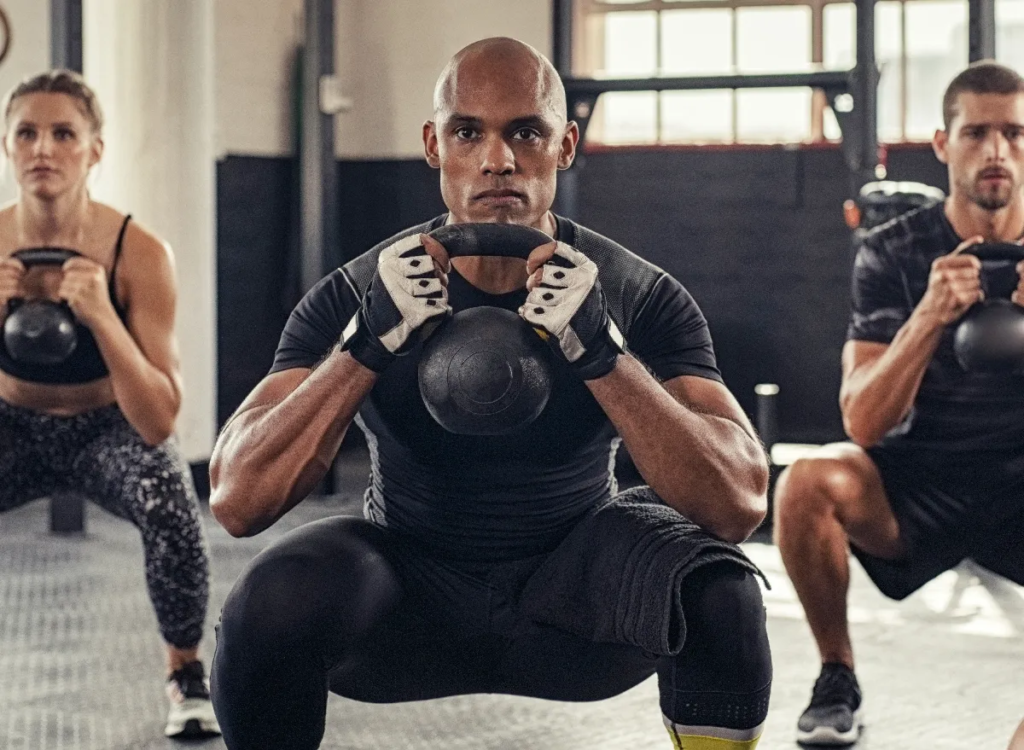The kettlebell, a versatile cast-iron weight with a handle, has become a staple in many gyms and home fitness routines. Its unique design allows for a wide range of exercises that engage multiple muscle groups simultaneously, making it a potent tool for building strength, improving cardiovascular health, and sculpting a toned physique.
This article delves into the world of full-body kettlebell workouts, addressing the questions you’ve been searching for on YouTube and providing a comprehensive guide to get you started.
Why Full-Body Kettlebell Workouts?

There are numerous reasons why full-body kettlebell workouts have surged in popularity:
- Efficiency: These workouts target major muscle groups in each session, maximizing your time investment.
- Effectiveness: Kettlebell exercises often incorporate compound movements, which work multiple joints and muscle groups at once, leading to increased strength and calorie burn.
- Versatility: The kettlebell allows for a vast array of exercises, catering to various fitness levels and goals. From beginner-friendly swings to advanced snatches, there’s a kettlebell move for everyone.
- Metabolic Boost: Kettlebell exercises often involve high-intensity movements, elevating your heart rate and promoting sustained calorie burning even after your workout.
- Space-Saving: You only need one kettlebell for a complete workout, making it perfect for home gyms or limited spaces.
Getting Started: Essential Tips
Before diving into a full-body kettlebell workout, here are some crucial pointers:
- Choose the right kettlebell weight: Selecting a weight that challenges you but allows for proper form is essential. Beginners can start with a lighter kettlebell (16kg or less for men, 8kg or less for women) and gradually progress.
- Master the form: Improper form can lead to injuries. Focus on maintaining a neutral spine, engaging your core, and controlling the movement throughout each exercise. If you’re unsure about an exercise, seek guidance from a certified trainer or watch instructional videos online.
- Warm-up and cool-down: Dedicate 5-10 minutes to a dynamic warm-up to prepare your body for exercise. Similarly, a cool-down with static stretches helps improve flexibility and reduce post-workout soreness.
- Listen to your body: Don’t push yourself beyond your limits. Take rest days when needed and adjust the intensity or weight if you experience pain.
Sample Full-Body Kettlebell Workout Routines

Here are two full-body kettlebell workout routines, one for beginners and one for more experienced individuals. You can adjust the sets, reps, and rest periods based on your fitness level.
Beginner Full-Body Kettlebell Workout:
- Warm-up: 5 minutes of light cardio (jumping jacks, jumping rope) and dynamic stretches.
Circuit 1: Perform 3 sets of 10-12 repetitions of each exercise with 30 seconds rest between exercises.
- Goblet Squat: This foundational exercise strengthens your legs and core. Hold the kettlebell at chest level with both hands and perform a squat, keeping your back straight and core engaged.
- Single-Arm Row: This unilateral exercise improves core stability and back strength. Hold a kettlebell in one hand and hinge at your hips, keeping your back flat and core engaged. Row the kettlebell towards your chest, squeezing your shoulder blade. Perform on each side.
- Kettlebell Swing: This dynamic exercise works your glutes, hamstrings, and core. Stand with feet shoulder-width apart and hold the kettlebell between your legs. Hinge at your hips and swing the kettlebell back between your legs, then explosively thrust your hips forward to propel the kettlebell up to chest height. Focus on using your hips, not your back, to generate power.
Rest for 1 minute between circuits.
Circuit 2: Perform 3 sets of 12-15 repetitions of each exercise with 30 seconds rest between exercises.
- Renegade Row: This exercise strengthens your core and upper body. Place one hand on a kettlebell and the other hand on the floor in a high plank position. Row the kettlebell towards your chest, squeezing your shoulder blade. Perform on each side.
- Alternating Lunges: This exercise targets your legs and core. Step forward with one leg, lowering your hips until both knees are bent at 90 degrees. Push back through your front heel to return to the starting position. Alternate legs with each repetition.
- Overhead Press: This exercise strengthens your shoulders and core. Hold the kettlebell at shoulder level with both hands and press it directly overhead until your arms are straight. Lower the kettlebell with control.
FAQs
Q. What are the benefits of a full-body kettlebell workout?
- Targets multiple muscle groups: Kettlebell exercises engage your core, legs, back, shoulders, and arms in a single workout.
- Boosts cardiovascular health: Many kettlebell exercises are dynamic and elevate your heart rate for a cardio benefit.
- Improves functional fitness: Kettlebell movements translate well to every day activities by building strength, stability, and power.
- Increases core strength: The kettlebell’s off-centre weight challenges your core to maintain stability throughout exercises.
- Time-efficient: Full body kettlebell workouts can be completed in 15-30 minutes, making them ideal for busy schedules.
Q. Is a full-body kettlebell workout suitable for beginners?
Yes, with proper modifications! Beginners can start with lighter weights, focus on proper form, and choose exercises with lower impact. There are also bodyweight variations of many kettlebell moves. It’s important to listen to your body and progress gradually.
Q. What are some essential full-body kettlebell exercises?
- Kettlebell swing: A foundational move that works your hamstrings, glutes, core, and shoulders.
- Goblet squat: This squat variation targets your quads, glutes, and core while holding the kettlebell close to your chest.
- Romanian deadlift: Strengthens your hamstrings, glutes, and lower back by hinging at the hips with a controlled movement.
- Turkish get-up: A challenging exercise that improves core stability, shoulder mobility, and overall coordination. (Start with a lighter weight or body weight for this one!)
- Single-arm row: Builds back strength and core stability by working one arm at a time.
Q. Where can I find a full-body kettlebell workout routine?
There are many resources available online! You can find video tutorials and written routines on websites like YouTube and fitness blogs.
Q. What are some safety tips for a full-body kettlebell workout?
- Warm up before every workout: Prepare your muscles with dynamic stretches and light cardio.
- Focus on form over weight: It’s crucial to prioritize proper technique to avoid injury. Don’t hesitate to use a lighter kettlebell if needed.
- Maintain a neutral spine: Keep your back flat and core engaged throughout exercises.
- Don’t jerk the weights: Use controlled movements with a full range of motion.
- Listen to your body: Take rest days and avoid pushing yourself to the point of pain.
- Consult a doctor before starting a new exercise program: This is especially important if you have any pre-existing health conditions.
Q. How many sets and reps should I perform?
This depends on your fitness level and the specific workout routine. Beginner routines might suggest 2-3 sets of 10-12 repetitions, while advanced routines may call for more sets and reps.
Q. What weight kettlebell should I use?
Choose a weight that allows you to maintain proper form throughout the exercise. You should feel challenged but not overwhelmed. Start lighter and gradually increase the weight as you get stronger.
Q. Can I do a full-body kettlebell workout every day?
It’s generally not recommended to do the same full body workout every day. Allow your muscles time to recover between workouts. You can alternate full-body routines with other types of exercise, or schedule rest days.
With these FAQs, you should be well-equipped to dive into the world of full body kettlebell workouts! Remember, consistency is key to seeing results. So grab your kettlebell, focus on proper form, and have fun!
To read more, Click here

